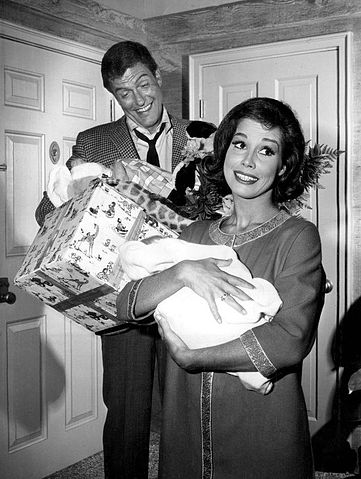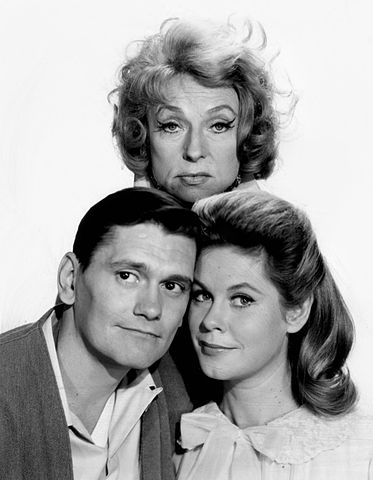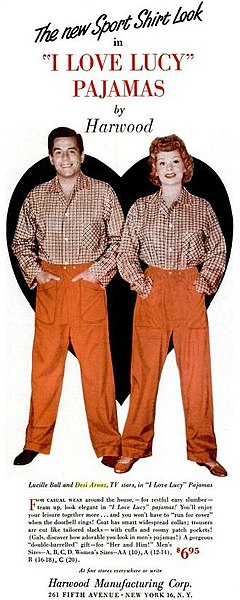The 1960s were a transformative decade for television, where love and romance began to play a significant role in shaping TV history. From the playful antics of Lucy and Ricky Ricardo to the political allure of characters like John and Jacqueline Kennedy, viewers were introduced to pairs whose on-screen chemistry left a lasting impact. These TV couples defined the era and continue to be remembered as some of the most iconic in television history.
Their stories of love, whether comedic or dramatic, resonated with audiences across the globe. For example, Lucy and Ricky from “I Love Lucy” brought their real-life relationship onto the screen, creating a dynamic that was both genuine and relatable. This not only set a precedent for future TV couples but also cemented their place in pop culture.
During this period, characters like Samantha and Darrin Stephens from “Bewitched” captivated viewers with their magical love story. As TV evolved, these couples showcased the changing dynamics and complexities of relationships, making them pioneers of romance on the small screen. Their iconic status wasn’t just about their romantic scripts, but about how they connected with the audience and made TV a more intimate experience.
Cultural Impact of 1960s Television on Romance
Television in the 1960s played a significant role in shaping ideas about love and relationships. TV couples from this era influenced how audiences viewed romance and mirrored societal changes.
Evolution of Romantic Storytelling
In the 1960s, television began to portray more diverse and dynamic love stories. Viewers saw couples like Lucy and Ricky from I Love Lucy and Rob and Laura Petrie from The Dick Van Dyke Show. These shows highlighted the day-to-day lives of married couples, mixing humor with heartfelt moments.
These new storytelling methods showed relationships with their ups and downs. Unlike prior depictions that were often idealized and simplistic, 1960s TV romances included conflicts and resolutions, making them more relatable. This shift helped viewers connect deeply with the characters and their stories.
The broader range of romantic tales also mirrored the changing dynamics in real-life relationships. As gender roles evolved, so did the representation of couples on screen. Women started to be shown as more independent, while men were seen as more emotionally engaged.
Television as a Reflection of Society
The TV romances of the 1960s reflected societal values and cultural shifts. During this decade, there were significant movements for civil rights and gender equality, and these changes began to find expression in TV narratives.
For instance, shows like Bewitched featured Samantha and Darrin Stephens, a couple that defied traditional norms with Samantha being a witch who wielded power and Darrin, a mortal, supporting her. This pairing mirrored the ongoing challenge to conventional gender roles in society.
Moreover, interracial and interfaith relationships began to be more subtly introduced, though they were not widely prevalent. The gradual inclusion of such relationships paved the way for future shows to tackle these themes more directly and openly.
Television as a medium provided a platform where cultural progress could be observed and subtly endorsed, influencing public perception and acceptance of evolving romantic ideals.
Defining Romance in the 1960s
Television in the 1960s brought romance into homes everywhere, showcasing couples whose chemistry set the standard for love on screen. This era laid the foundation for many romantic tropes that still influence TV today.
The Language of Love on TV
During the 1960s, TV couples used subtle gestures and meaningful looks to express their love. Physical displays of affection were often limited due to stricter broadcasting standards, but this constraint led to creative expressions of romance.
For example:
- Holding hands
- Exchanging longing glances
- Sharing private jokes
Couples like Samantha and Darrin Stevens from Bewitched or Rob and Laura Petrie from The Dick Van Dyke Show depicted relationships that balanced romance with everyday life. Their on-screen chemistry and heartfelt dialogs showed viewers what love could look like in a typical household, even with a touch of magic or comedy.
Romantic Tropes and Trends
Romantic tropes of the 1960s often focused on idealized relationships, first love, and close friends transitioning into romantic partners. TV shows capitalized on familiar scenarios, making the romantic development predictable yet comforting for audiences.
Common tropes included:
- Opposites Attract: Where characters with contrasting personalities fall in love.
- First Love: Highlighting young love and the emotional intensity that comes with it.
- Friends to Lovers: Depicting friends who gradually realize deeper feelings for each other.
These trends were evident in shows like I Dream of Jeannie, where the magical genie and her master developed a romantic connection over time, and Gidget, which focused on the adventures and first loves of a surfing teen named Gidget.
In sum, 1960s TV romance was all about chemistry, familiar tropes, and the language of love that transcended strict broadcasting rules to touch viewers’ hearts.
Iconic TV Couples of the 1960s
The 1960s brought us many memorable TV couples who shaped the way romance and relationships were portrayed on screen. Among these, Lucy and Ricky, and Mike and Carol Brady truly stood out for their unique chemistry and iconic roles.
Lucy and Ricky – I Love Lucy
Lucy Ricardo and Ricky Ricardo, played by Lucille Ball and Desi Arnaz, were a groundbreaking couple on television. I Love Lucy premiered in 1951 but remained incredibly influential throughout the 1960s. Their dynamic was special because of their real-life marriage, which brought authenticity to their on-screen relationship.
Lucy was known for her comedic genius and knack for getting into hilarious mischief. Ricky, a bandleader, often found himself navigating her chaotic schemes. Together, they created moments filled with laughter and affection. Their chemistry was undeniable, making them a beloved couple across generations.
“I Love Lucy” set a high standard for sitcoms and demonstrated that a couple’s love could be both funny and heartwarming. The show remains a classic, celebrated for its contribution to television history.
Mike and Carol Brady – The Brady Bunch
Mike Brady and Carol Brady, portrayed by Robert Reed and Florence Henderson, were the central couple on The Brady Bunch, which debuted in 1969. This blended family sitcom showcased the merging of their families with six children, creating a new kind of family dynamic on TV.
Their relationship was marked by mutual respect, warmth, and a strong sense of partnership. Mike, an architect, and Carol, a stay-at-home mom, tackled everyday problems with unity and understanding. They presented an idealized version of a supportive and loving marriage, setting an example for many viewers.
Despite dealing with typical family issues, Mike and Carol always found time to support one another, reinforcing the idea that love and family come first. The Brady Bunch continues to be celebrated for its positive portrayal of family life and the strong bond between Mike and Carol.
On-Screen Chemistry and Real-Life Relationships
Some TV couples from the 1960s not only had incredible on-screen chemistry but also shared significant real-life relationships. This mix often enhanced their performances, as seen with Lucille Ball and Desi Arnaz, and Elizabeth Taylor and Richard Burton.
Lucille Ball and Desi Arnaz
Lucille Ball and Desi Arnaz starred in I Love Lucy, a groundbreaking sitcom of the 1950s and ’60s. Their on-screen chemistry was undeniable and largely stemmed from their real-life marriage. Ball’s comedic genius paired with Arnaz’s musical talent created a dynamic duo that captivated audiences.
They married in 1940 and founded Desilu Productions, producing not only I Love Lucy but also several other successful shows. The couple’s unique ability to blend humor and authenticity helped the show become a timeless classic. Despite their eventual divorce in 1960, their professional relationship and contributions to television are still celebrated.
Elizabeth Taylor and Richard Burton
Elizabeth Taylor and Richard Burton’s relationship began on the set of Cleopatra in the early 1960s. Their intense chemistry translated well on screen, making them one of Hollywood’s most talked-about couples. Known as the “Liz and Dick” phenomenon, their passionate and tumultuous relationship was a media sensation.
They starred together in several films, including Who’s Afraid of Virginia Woolf?, where their real-life relationship added depth to their performances. Taylor and Burton married and divorced twice, but their undeniable connection left a lasting impact on their careers and the film industry. Their story remains one of the most famous Hollywood romances.
Character Development and Relationship Dynamics
TV couples of the 1960s showcased a range of emotions and experiences through their character development and relationship dynamics. These elements contributed significantly to the viewers’ emotional investment in their stories.
Struggles and Conflict
Many iconic TV couples faced various struggles and conflicts that tested their relationships. For instance, Rob and Laura Petrie from “The Dick Van Dyke Show” often had to balance Rob’s demanding job as a TV writer with their family life. This sometimes led to misunderstandings and arguments, which showcased the challenges of real-life marriages.
Darrin and Samantha Stephens from “Bewitched” dealt with unique conflicts due to Samantha’s witchcraft and Darrin’s insistence on living a normal life. These differences frequently led to comedic yet meaningful disagreements, highlighting the importance of compromise and acceptance in their relationship.
These struggles and conflicts made the characters more relatable and their love stories more engaging. Audiences could see reflections of their own challenges, making the couples’ resolutions more satisfying and authentic.
Partnership and Growth
Strong partnerships and personal growth were key elements in the success of 1960s TV couples. For example, Lucy and Ricky Ricardo from “I Love Lucy” supported each other’s dreams and ambitions, despite frequent comedic mishaps. Their dynamic showcased a partnership where both individuals encouraged and helped each other grow.
On “The Brady Bunch,” Mike and Carol Brady formed a blended family, demonstrating how collaboration and teamwork could overcome the challenges of merging two families. Their relationship provided a model of effective communication and mutual respect.
Through these partnerships, many TV couples exhibited significant growth, both individually and as pairs. This growth was evident in their increasing ability to navigate life’s ups and downs together, making their relationships deeper and more resilient.
Impact of Writers and Actors on Television Romance
The role of writers and actors in shaping TV romance is crucial. Writers bring unique narratives, while actors deliver performances that make these stories memorable.
Creative Influences Behind the Scenes
Writers play an indispensable role in crafting the stories we love. They are the ones who create compelling characters and memorable scenes. During the 1960s, writers like Carl Reiner and Sherwood Schwartz designed narratives that blended humor and heart, making TV couples unforgettable.
Lucille Ball and Desi Arnaz were not only actors but also part of the creative process behind “I Love Lucy”. Their real-life chemistry influenced the characters of Lucy and Ricky Ricardo, adding authenticity to their on-screen relationship.
Script revisions and collaborative work between writers and actors often led to tighter, more engaging storytelling. This collaboration created a more cohesive and believable romance on screen, capturing the audience’s hearts.
Standout Performances
Actors bring the written word to life. During the 1960s, performances by Elizabeth Montgomery in “Bewitched” and Dick Van Dyke in “The Dick Van Dyke Show” set high standards for TV romances. Their ability to convey emotion, humor, and subtle nuances made their on-screen relationships more relatable.
Lucille Ball and Desi Arnaz are iconic examples. Their real-life romance translated into authentic performances on “I Love Lucy,” making their characters one of the most beloved couples of all time. Their acting skills, combined with their natural chemistry, brought a new level of depth to TV romance.
Great performances are not solely about the lines delivered. Body language, facial expressions, and timing all contribute to making a TV couple iconic. These standout performances from the 1960s continue to influence how romance is portrayed on television today.
Legacy and Influence of 1960s TV Couples on Contemporary Media
TV couples from the 1960s have left a lasting impact on how romance is portrayed on television. Their influence is evident in today’s shows, from character dynamics to story arcs.
From Prime Time to Present Day
The 1960s introduced several iconic TV couples who continue to influence today’s media landscape. Lucy and Ricky from I Love Lucy set a precedent for the balancing act of comedy and romance in prime time.
Their dynamic showcased how humor and affection could coexist, paving the way for similar relationships in modern sitcoms.
Another notable couple, Samantha and Darrin from Bewitched, demonstrated the charm and struggles of a magical marriage. This blend of fantasy and romance has inspired many contemporary shows that mix supernatural elements with romantic storylines. The chemistry and challenges faced by these couples are a blueprint for writers when creating compelling on-screen relationships.
Contemporary TV series often pay homage to these classic duos, integrating elements of their interactions into new narratives. The enduring appeal of these couples underscores their significant role in shaping TV romance.
The Evolution of TV Romance
Romantic relationships on TV have evolved significantly since the 1960s, but the foundational elements laid during that era continue to resonate. Shows like Star Trek and The Addams Family introduced diverse romantic subplots that expanded the scope of televised love stories.
In Star Trek, the relationship between Spock and Christine Chapel broke new ground by exploring unrequited love and professional boundaries. This kind of nuanced romance has become a staple in many contemporary dramas.
The interplay of affection and quirkiness in Gomez and Morticia Addams from The Addams Family remains influential. Their passionate and supportive relationship contrasts with the often superficial portrayal of TV romances, adding depth and relatability to modern couples.
Television romances today draw heavily from the narrative techniques and character archetypes established in the 1960s, proving that the era’s TV couples have made a lasting legacy on the depiction of love and partnership on screen.
Conclusion
The 1960s brought some unforgettable TV couples to our screens. These duos left a lasting legacy that continues to shape television romance today.
The influence of these iconic couples can still be seen in modern television. Producers and writers often draw inspiration from these early examples of on-screen romance. This shows the timeless appeal of well-crafted love stories.



